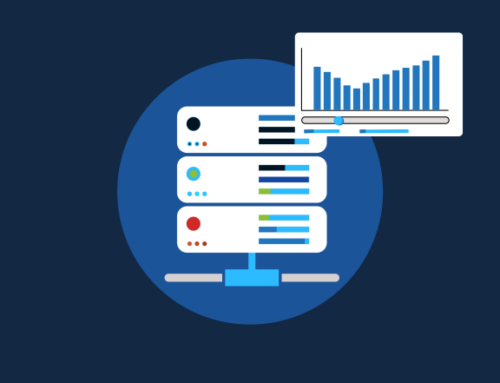A satisfied customer base leads to loyalty, positive word-of-mouth, and ultimately, business growth. For hybrid and fiber wireless companies, delivering top-tier customer support comes with its own set of unique hurdles, from managing infrastructure to addressing customer needs.
However, by embracing an approach to communication and leveraging the right tools, ISPs can transform their customer support into a competitive advantage. Proactive strategies, such as anticipating customer concerns and addressing them prior to potential issues, foster a customer-centric experience. Additionally, smart tools like ticketing systems streamline communication, centralize customer interactions, and empower ISPs to deliver the efficient, personalized support that any type of customer looks for!
The Power of Proactive Customer Communication
Proactive communication shifts the customer support paradigm from reactive to anticipatory. It means getting ahead of potential issues and addressing customer needs.
Benefits:
- Reduced support volume: By proactively providing information about outages, upgrades, maintenance, and billing cycles, you can head off a significant number of customer inquiries. This frees up your support team to focus on more complex issues.
- Enhanced customer satisfaction: Customers appreciate it when they feel like their ISP understands their needs and is actively working to address them. Proactive communication fosters trust and builds loyalty.
- Improved brand perception: A proactive approach demonstrates a commitment to customer service excellence, which positively impacts your ISP’s reputation within the industry.
Strategies:
- Automated updates: Notify customers about planned and unplanned outages, scheduled maintenance, or service upgrades via SMS, email, or in-app notifications.
- Knowledge base articles and FAQs: Develop a robust knowledge base with clear answers to common questions. Promote it proactively to customers.
- Billing notifications: Send reminders before bills are due, offer payment plan options, and provide clear breakdowns of charges to avoid billing surprises.
- Personalized reminders: Remind customers of upcoming appointments, equipment renewals, or potential service upgrades tailored to their needs.
Ticketing Systems: Streamlining Your Support
A ticketing system acts as the backbone of efficient customer service operations for ISPs. It’s a software solution that centralizes, organizes, and tracks customer inquiries coming in through various channels like email, phone, or social media.
Benefits:
- Centralized communication: A ticketing system eliminates fragmented communication. Customer interactions from all channels are consolidated in one place for easy access and tracking.
- Improved response times: Tickets are assigned and prioritized based on urgency, ensuring faster responses and reducing customer wait time.
- Collaboration within support: Ticketing systems allow for seamless collaboration, internal notes, and smooth escalation processes, ensuring customers get the best possible support.
- Data insights: Ticketing systems provide data on ticket volume, resolution times, customer satisfaction, and more, enabling you to identify trends and areas for improvement.
Strategies:
- Customizable tickets: Tailor the ticket lifecycle to match your ISP’s specific support processes.
- SLA management: Set and track service level agreements (SLAs) to ensure timely resolutions for customers.
- Knowledge base integration: Connect your knowledge base to the ticketing system to empower both customers and support staff with self-service solutions.
Overcoming Common Customer Communication Obstacles
Hybrid and fiber wireless ISPs often face specific hurdles that can hinder their ability to provide exceptional customer support.
Common Challenges:
- Limited resources: Smaller teams may struggle to handle growing customer bases and high volumes of inquiries.
- Diverse communication channels: Customers expect support through phone, email, chat, and social media, which can lead to disjointed communication.
- Handling technical complexity: Support staff need the expertise to troubleshoot complex network and connectivity issues.
- Consistency in service: Ensuring consistent messaging and quality across all support channels can be difficult.
Strategies:
- Leveraging self-service options: A well-structured knowledge base with clear FAQs empowers customers to find answers independently, reducing pressure on support staff.
- Investing in staff training: Equip your team with both the technical expertise to solve problems and the communication skills to deliver empathetic and helpful support.
- Clear internal escalation processes: Have well-defined procedures for escalating complex issues to the appropriate teams or specialists, ensuring timely resolutions.
- Templates for common responses: Create standardized templates for frequently occurring inquiries to streamline responses and ensure consistent messaging across your support channels.
The Role of Metrics in Elevating Support
Metrics aren’t just numbers; they’re powerful tools that reflect the state of your customer support operations. By consistently tracking key metrics, ISPs have insights that drive continuous improvement and take customer satisfaction to the next level.
Key Metrics to Track:
- First response time: How quickly does your team acknowledge a customer inquiry? This metric is critical for customer satisfaction and reducing customer frustration.
- Average resolution time: How long does it take to fully resolve a customer issue? Tracking this helps identify bottlenecks in support processes and pinpoint areas where efficiency can be improved.
- Customer satisfaction scores (CSAT): Regular surveys after resolutions offer direct feedback on the quality of support provided. Consistently high CSAT scores are a sign of happy customers.
- Number of tickets by category: Track which types of issues generate the most support tickets. This helps identify recurring problems, common knowledge gaps, or areas where proactive communication could be improved.
Using Metrics:
- Identifying areas for improvement: Metrics reveal where your support team excels and where there’s room for growth. Focus on areas with the biggest potential impact on the customer experience.
- Setting performance benchmarks: Establish realistic performance targets based on your metrics data and industry standards. This provides a roadmap for improvement.
- Empowering your support team: Share metrics transparently with your team. This fosters a sense of ownership and motivates them to strive for continuous improvement.
Focusing on proactive communication, efficient support processes, and continuous improvement driven by metrics is a recipe for success. By embracing the strategies outlined in this blog, ISPs can transform their customer support into a powerful tool for customer satisfaction, loyalty, and growth. Remember, proactive communication anticipates customer needs, ticketing systems like Sonar streamline support, smart strategies to overcome common obstacles, and insightful metrics drive continuous improvement.





